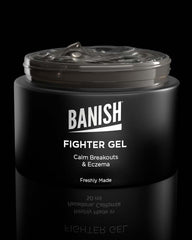How I Cured my Acne: Low Glycemic Diet
By Kali Kushner
Today, I’m here to talk to you guys about how diet can affect your skin and how a low glycemic diet could ‘cure’ acne.
People will say nonsense to those with acne such as ‘you are what you eat.’ However the truth is that sometimes that can be true to a certain extent depending on your particular cause of acne.
Sure, you don’t need to eat a perfect whole foods diet, but you could eat what you believe is the cleanest and still have acne.
You could eat the worst and still have the same acne. Sometimes, it’s not always the common things that people associate with acne like chocolate or candy and fast food.
[embedded content]
When it comes to diet, you really need to factor in your own individual experience, however there is more evidence that this type of diet called a low glycemic index diet can reduce acne. Research has shown that of the best diets for acne is a low GI or commonly known as low inflammation diet. A low inflammation or low GI ( Glycemic Index) Diet is correlated with fewer acne breakouts.

What Is The Glycemic Index?
The reason why this is considered the best diet for acne is that it focuses on reducing inflammation because high glycemic index foods can lead to increased inflammation.
Glycemic index basically measures the glycemic load of food or how a food is going to impact your blood sugar level. It’s calculated based on the potential of a food to increase blood glucose based on the net carbohydrates it has.
If a food has a higher glycemic index, like a 70 or more, it’s going to have more of a impact on your blood sugar level and it’s going to cause a spike in your insulin.
Why High Glycemic Foods Cause Acne?
There’s growing evidence that acne is more prevalent among civilizations that follow a westernized diet that includes more processed food. In fact in civilizations where they still only eat whole foods, no cases of acne are found.
If you think about your standard diet, most American’s consume ultra-processed foods for at least 57% of their diet and this survey was done in 2002, so the number could potentially be higher nowadays.
A spike in your insulin is going to cause also a negative chain reaction by impacting the body’s metabolism, and spiking up other hormones, specifically a hormone called IGF-1 ( insulin-like growth factor 1). An increase in IFG-1 will simultaneously increase androgen production and excess androgens known for causing acne by increasing sebum production.
The reason that it can be bad for acne is because your hormones are going crazy and when your insulin’s going crazy, and your inflammation’s going crazy, and acne sufferers already have higher inflammation, it’s just that it’s too much for your body to handle and so it comes out in the form of cystic acne.
Over time, your body will store that excess insulin that it’s producing because the insulin levels keep spiking and your body can’t handle that. So the insulin that’s stored can also come surging out back into the body. If you think about it, it makes sense and I’ve noticed a huge difference in my skin since I don’t really eat as much refined carbs anymore.
Evidence That A Low GI Diet Reduces Acne
There are several studies that have been done that point to a low GI diet reducing acne.
In a US study, over 2000 patients were put on a low GI diet and at the end, 87% of the patients reported less acne, and 91% reported needing less acne medication.
Another study that was done in 2007 tested a controlled group of acne sufferers that were encouraged to include carbohydrates in their diet vs another group of acne sufferers that were placed on the low GI diet.
In the low GI diet group, there was a significant reduction in pimples and also a decreased sensitivity to insulin levels after only 12 weeks! With these studies, it just goes to show that diet does play a role in inflammation and acne.
I just think that it’s crazy that there’s not more talk on the connection between diet and acne especially online and with social media.
Also a low GI diet in most cases would not harm people so perhaps it is something that could be recommended more often in the medical community as a large variety of foods can be included, and in may even have other benefits like increased cardiovascular health.
What Are High Glycemic Foods?

High glycemic food items are typically processed or refined foods that typically are low in fiber and convert quickly into glucose when we eat them.
High GI foods are things like white bread, white rice, white pasta, cereals, cakes, fruit juices, or sweetened dairy products like fruit yogurts. Basically think of any refined carb or a carb that comes in a packaging and those are likely to have high GI.
I wouldn’t say to avoid all carbs because we need carbs to function for the most part. Yes, I know some people are keto and they don’t eat carbs, but long term we need whole grains and carbs. Glucose is still our bodies initial and main source of energy, so do eat your carbs, but balance it with carbs that are higher in fiber or eat them with a meal combined with a healthy protein for example.
Signs Your Food Is Causing Spikes In Insulin:
If you’re tired after eating certain foods, achy, or if you feel like you need an immediate nap, your food is probably spiking your blood sugar level really high and then dropping it. So look out for things like that. Because I know there’s a huge difference when I quit processed carbs.
What’s The Low GI Diet

A low GI diet means avoiding those high glycemic index foods in the 70+ levels of the glycemic index or controlling the portion size of them. You don’t have to completely avoid all carbs.
Trying out the low GI diet means you may see an improvement in acne within as quickly as 3 months as well as improved levels of inflammation. There’s also some evidence that sebaceous glands can shrink by eating a low GI diet for a while too.
Foods that contain other nutrients like fiber or fat can also be lower on the GI scale.
Try to eat foods on the GI scale that are number 55 or less. Medium GI foods are 56-69 and high is going to be 70 or more, like I said earlier. Opt for proteins and most vegetables except for the starchy ones like potato.
If you are going to eat meat, generally try to avoid processed meats like deli or hot dogs.
Some fruits actually can trigger acne because they are high GI. For example, a ripe banana has a sugar content of 19 grams and I think your daily recommended amount is around the 20’s for sugar, so yeah, I know that’s crazy that hearing some fruits may not be as healthy for you as we are led to believe.
Most vegetables are going to be lower GI and fine to eat in larger portion sizes. Dark leafy greens, cauliflower, and most dairy without extra sweetener is low GI, but I would not consider eating dairy if you are trying to reduce your acne just because it also causes inflammation and dairy itself has the IGF1 hormone in it.
This isn’t nonsense. I have noticed a dramatic improvement in my skin and acne since going on a low GI diet. I don’t get the big cyst anymore since I stopped eating refined carbs, sugar, and anything that’s high GI.
It can kind of sound confusing. There are plenty of charts online that can help you out such as the one shared above. You can also sort by basic categories like nuts, beans, and other legumes that will be low GI. If your starch or bread has high fiber, or made with lots whole grain, nuts, seeds, they can be low GI too.
Glycemic Load vs Glycemic Index
Besides high glycemic and low glycemic, there’s also a thing called the glycemic load. That one has a smaller sliding scale and it takes into account the portion sizes.
When glycemic load are taken into account with the food, you can eat the high GI foods that you would normally skip.
For example, a whole doughnut its very high on the GI scale, but on the glycemic load if you only eat 1/4th of the serving size, it would not affect your blood sugar as much.
It can sound a little confusing – but again think of your diet as a WHOLE – maybe you eat low GI, and high fiber for 95% of your food for the day, so you could add in 1/3rd a serving of some pastries for example and still not spike your blood sugar much.
Topical Products That Reduce Inflammation
When lowering our inflammation and acne internally with a low glycemic index diet, at the same time you may want to lower inflammation on the surface with the right skincare. The fighter gel contains powerful anti inflammatory ingredients like msm and centalla asiatica that will help calm inflammation down on the surface while we wait for the effects of the low GI diet to kick in.

 With any diet, the one that offers the most balanced nutrition but that you can still follow reasonably is the best one to go with. Figure out which one offers you the most flexibility, while still giving you gradual improvements.
With any diet, the one that offers the most balanced nutrition but that you can still follow reasonably is the best one to go with. Figure out which one offers you the most flexibility, while still giving you gradual improvements.
Hope this helps you solve a mystery of why you may be getting acne and can help you get rid of acne or at least lessen it!
Maybe you realized, “Hey, I do eat a lot of refined carbs and I’m also breaking out. So maybe I’ll cut down on processed carbs and see what happens ” Regardless of what you choose, at least now you know that there’s is a direct correlation between a low GI diet and acne breakouts!
All knowledge is good knowledge, right?
—
References:
Can the right diet get rid of acne? https://www.aad.org/public/diseases/acne/causes/diet
1. Smith RN, Mann NJ, Braue A, Mäkeläinen H, Varigos GA. The effect of a high-protein, low glycemic-load diet versus a conventional, high glycemic-load diet on biochemical parameters associated with acne vulgaris: a randomized, investigator-masked, controlled trial. J Am Acad Dermatol. 2007 Aug;57(2):247-56. doi: 10.1016/j.jaad.2007.01.046. Epub 2007 Apr 19. PMID: 17448569.
2. Pappas A. The relationship of diet and acne: A review. Dermatoendocrinol. 2009 Sep;1(5):262-7. doi: 10.4161/derm.1.5.10192. PMID: 20808513; PMCID: PMC2836431.
Melnik BC. Acne vulgaris: The metabolic syndrome of the pilosebaceous follicle. Clin Dermatol. 2018;36(1):29-40. doi:10.1016/j.clindermatol.2017.09.006.
Kim Y, Chen J, Wirth MD, Shivappa N, Hebert JR. Lower Dietary Inflammatory Index Scores Are Associated with Lower Glycemic Index Scores among College Students. Nutrients. 2018 Feb 7;10(2):182. doi: 10.3390/nu10020182. PMID: 29414858; PMCID: PMC5852758.


